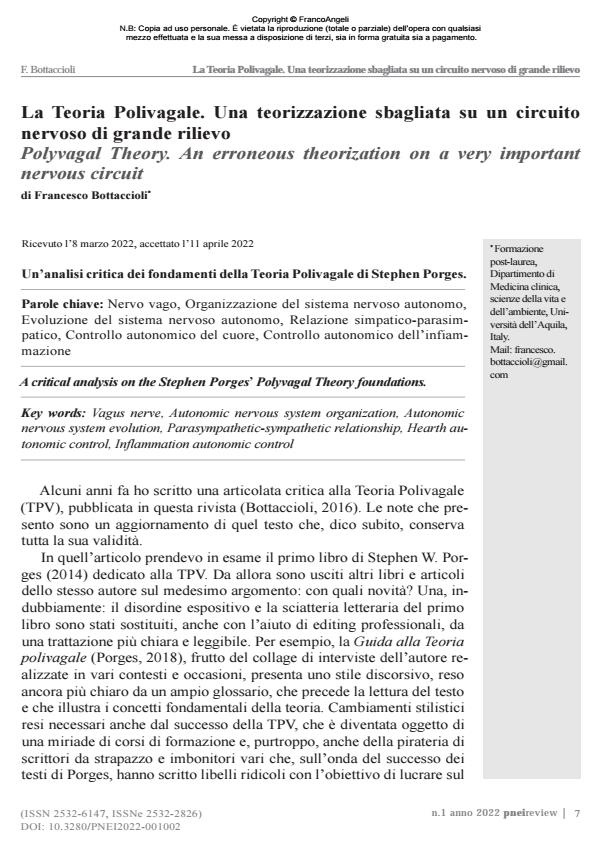La Teoria Polivagale. Una teorizzazione sbagliata su un circuito nervoso di grande rilievo
Titolo Rivista PNEI REVIEW
Autori/Curatori Francesco Bottaccioli
Anno di pubblicazione 2022 Fascicolo 2022/1
Lingua Italiano Numero pagine 13 P. 7-19 Dimensione file 196 KB
DOI 10.3280/PNEI2022-001002
Il DOI è il codice a barre della proprietà intellettuale: per saperne di più
clicca qui
Qui sotto puoi vedere in anteprima la prima pagina di questo articolo.
Se questo articolo ti interessa, lo puoi acquistare (e scaricare in formato pdf) seguendo le facili indicazioni per acquistare il download credit. Acquista Download Credits per scaricare questo Articolo in formato PDF

FrancoAngeli è membro della Publishers International Linking Association, Inc (PILA)associazione indipendente e non profit per facilitare (attraverso i servizi tecnologici implementati da CrossRef.org) l’accesso degli studiosi ai contenuti digitali nelle pubblicazioni professionali e scientifiche
Un’analisi critica dei fondamenti della Teoria Polivagale di Stephen Porges
Parole chiave:Nervo vago, Organizzazione del sistema nervoso autonomo, Evoluzione del sistema nervoso autonomo, Relazione simpatico-parasimpatico, Controllo autonomico del cuore, Controllo autonomico dell’infiammazione
Francesco Bottaccioli, La Teoria Polivagale. Una teorizzazione sbagliata su un circuito nervoso di grande rilievo in "PNEI REVIEW" 1/2022, pp 7-19, DOI: 10.3280/PNEI2022-001002